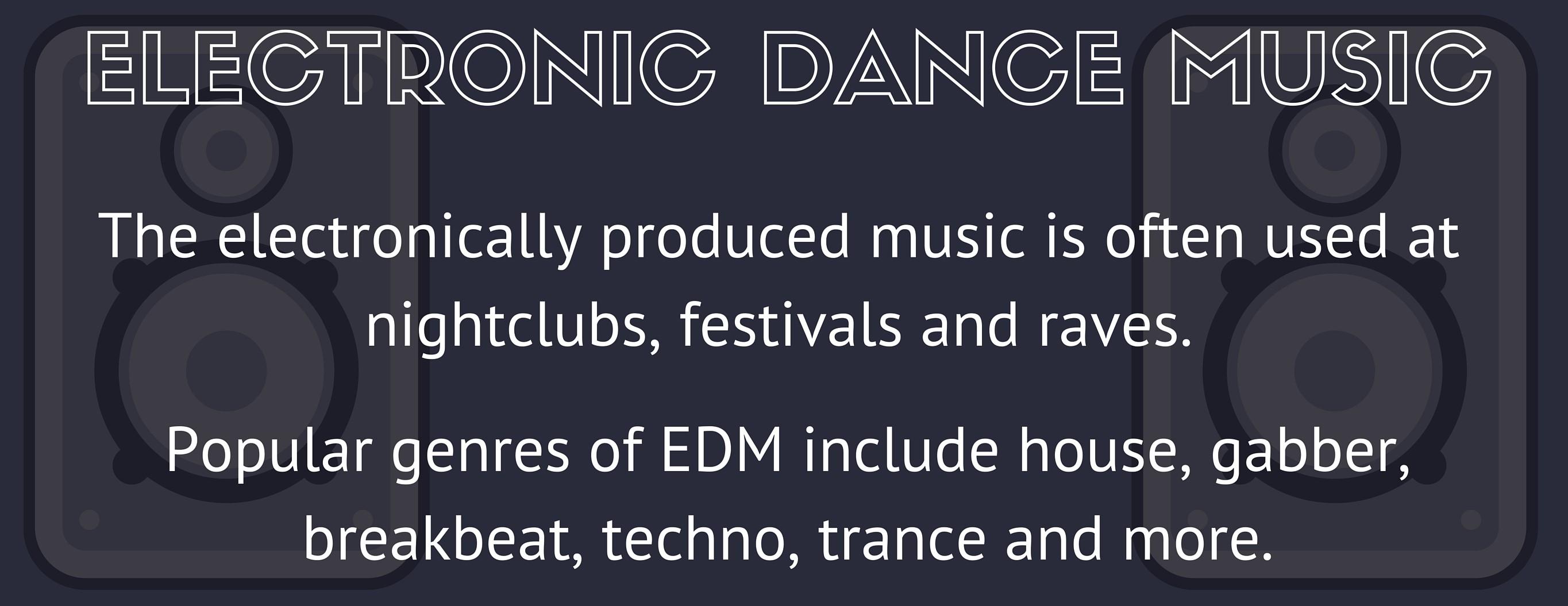“EDM isn’t something that you hear on the radio a lot; it’s not something that [students] talk about,” sophomore Priya Kini said. “When we talk about music you normally think of your normal pop culture artists like Taylor Swift, Rihanna, Beyonce, all that which I love too but I feel like EDM is one of those genres that is much less known.”
As our electronic gadgets get fancier, our music also becomes more technological. Sophomore Priya Kini is among the many students that have fallen under the spell of electronic dance music, with it’s futuristic sounding beats which go hand-in-hand with the rest of the technology reliant 21st century.
Many music genres are popular in our culture today but few have spawned their own little subcultures. EDM is one genre that has, creating a trend known as rave culture. The dancing part comes into play during raves, the EDM version of concerts. Raves tend to be indoors and the audience forgoes seats to stand and dance to the beat.

Although EDM has drawn its own dedicated fanbase, some stay away from it due to it’s reputation of drug and alcohol use.
Many EDM fans, like Kini, tend to stay away from raves since it’s hard to tell what kind of people are there. She specifically mentions that fights have been known to happen in moshpits, an area where more hyped-up audience members get together and dance.
Despite the potential dangers at raves, sophomore Nellie Yew continues to attend them. As with all situations, there are strangers that may be potentially dangerous, but Yew finds that the people she’s met at raves are extremely accepting of all different kinds of people.
The rave scene goes hand-in-hand with using a lot of drugs so some people stay away from it for that. But the thing is that although a lot of people who rave are on drugs, they don’t really care if you’re not on drugs. I think that as long as you enjoy the music, you should be allowed to rave.”
sophomore nellie yew
But whether a fan is a regular rave-goer or not, the appreciation of music remains the same.
To Kini, EDM stands out to her because the lack of lyrics and the upbeat tempo motivates her as she’s working on homework. And although she finds EDM to be similar in pop music in that many pop artists use electronically-made music as backing soundtracks, the lack of lyrics — the very reason she likes EDM music — is also the same reason she feels it’ll never be that popular.
She says that although our generation’s involvement with technology is increasing rapidly, EDM doesn’t gain the fanbase that pop music does simply because the lack of lyrics makes it harder for some listeners to relate to the music.
“Without the lyrics, some people think [the songs] sound really similar,” Kini said. “It makes it hard to differentiate [between the songs] and since we already have all this technology and it isn’t that popular, I don’t think it will get more popular.”
The appreciation of music is what keeps EDM fan and senior Daniel Vu going to raves.
Check out the playlist below to hear some of Yew, Kini and Vu’s EDM favorites
“Am I allowed to say that?” Vu said, laughing, when asked when he went to his first rave. “Near the end of freshman year,” he said.
Because of the drug culture, raves tend to be controversial. He emphasizes that he hasn’t had any experience with drugs at raves, but he is aware that others attending are often under the influence of drugs, using them as a way to enhance the experience of a rave. However, he doesn’t feel like the drug stigma is specific to the rave culture, saying that if people randomly started to do drugs while listening to indie music, the same sort of drug stigma would develop.
Vu explains that drugs, specifically ecstasy, are commonly used to enhance the experience, since they are said to create a high that makes the music and the lighting blur into a more vivid experience.
“It sort of becomes something that people will think of me,” Vu said. “People think of me like ‘You go to raves a lot; you must do a lot of drugs,’ I don’t really mind it because EDM is something I really love.”









